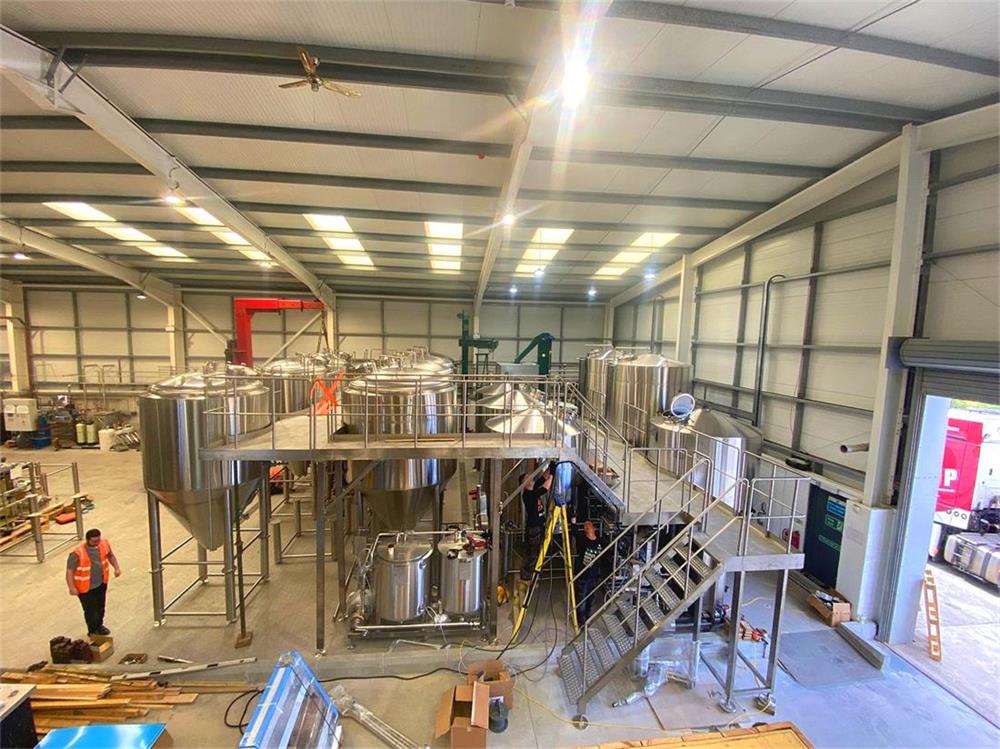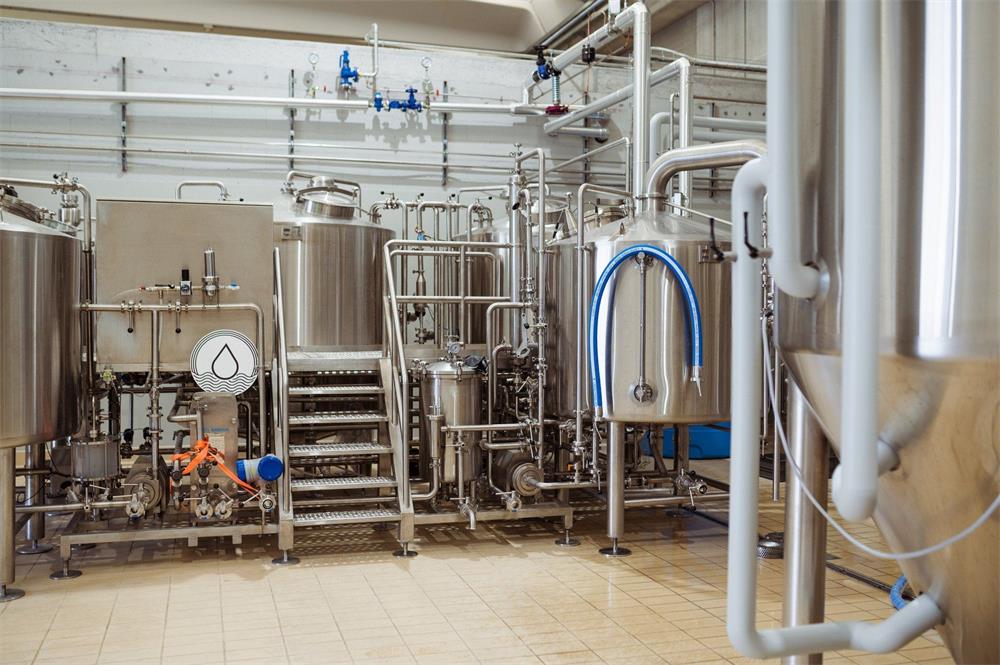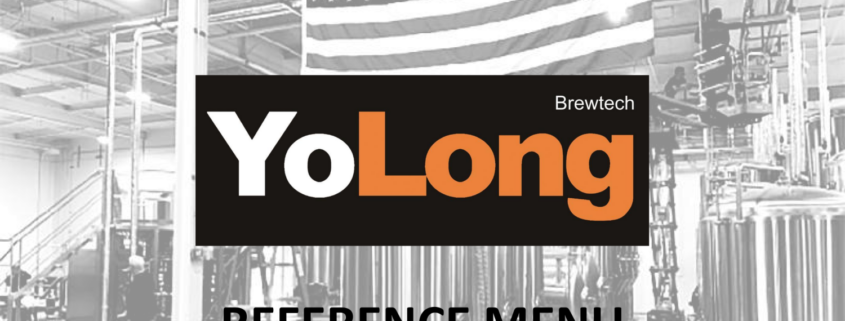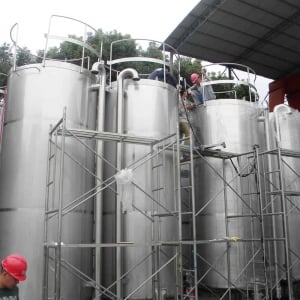Stainless Steel Beer Brewing Equipment
Beer brewing has been around for thousands of years, but the technology and tools used have evolved significantly. Stainless steel beer brewing equipment has become the gold standard in the modern brewing industry, from small home setups to large commercial operations. It offers durability, hygiene, and versatility. In this comprehensive guide, we’ll dive deep into everything you need to know about stainless steel brewing equipment, the brewing process, equipment types, and how to choose the right suppliers. Whether you’re a homebrewer or managing a large-scale brewery, this guide will walk you through every step.

Overview of Stainless Steel Beer Brewing Equipment
Beer brewing equipment made from stainless steel has many advantages over other materials like plastic or aluminum. Stainless steel is resistant to corrosion, easy to clean, and maintains purity, which is critical when brewing beverages like beer where contaminants can affect flavor. In this guide, we explore the essential equipment used in the brewing process, why stainless steel is the material of choice, and offer insights into how to select, operate, and maintain brewing systems.
Brewing beer involves several steps: mashing, boiling, fermenting, and packaging, all of which require specialized equipment. Each piece plays a unique role in crafting your perfect brew. From mash tuns to fermentation tanks, stainless steel ensures the best brewing environment by being durable and providing excellent temperature control.
Why Stainless Steel for Brewing?
Stainless steel is preferred for brewing for several reasons:
- Durability: It resists wear and tear over time.
- Hygiene: It’s easy to sanitize, preventing bacterial contamination.
- Non-reactive: It doesn’t react with acidic substances like beer, ensuring flavor purity.
- Heat resistance: Stainless steel tolerates high temperatures, making it ideal for boiling and fermentation stages.
- Aesthetic appeal: Many brewers appreciate the sleek, professional look of stainless steel equipment in their brewery.
Guide to Essential Stainless Steel Brewing Equipment
When starting a brewery or upgrading your setup, choosing the right stainless steel equipment is key. This section will break down the different types of equipment, their function, and what to look for when purchasing.
Mash Tun
The mash tun is where the brewing process begins. Malted barley and hot water mix here to convert starches into fermentable sugars. The mash tun needs to be capable of holding heat efficiently.
- Key Features: Insulated stainless steel body for temperature retention, false bottom for easy separation of wort (liquid) from grain.
- Capacity Consideration: Ensure the mash tun is large enough to handle your brew volume.
Boil Kettle
After mashing, the wort moves to the boil kettle, where it’s boiled with hops. Stainless steel ensures even heat distribution and prevents scorching.
- Key Features: Thick stainless steel walls, a built-in thermometer, and a valve for transferring wort.
- Customization Options: Some kettles come with whirlpool arms or sight glasses for easier operation.
Fermentation Vessels
Once the wort cools, it’s transferred to fermentation vessels. These tanks are where yeast is added, and fermentation begins, converting sugars into alcohol.
- Key Features: Conical shape (for sediment collection), pressure relief valves, temperature control jackets.
- Size Options: Available from small 5-gallon units for homebrewers to large 10,000-liter fermenters for commercial setups.
Bright Tanks
After fermentation, beer often goes into bright tanks for carbonation and clarification. These tanks are crucial for producing clean, crisp beer.
- Key Features: Pressure-rated tanks, carbonating stones for uniform carbonation.
- Advantages: Stainless steel prevents contamination and ensures beer clarity.
Heat Exchangers
A heat exchanger cools down the wort before it enters the fermenter. Stainless steel exchangers are preferred because they can handle rapid temperature changes without corroding.
Types of Stainless Steel Beer Brewing Equipment
| Equipment Type | Description | Primary Use | Material Benefits |
|---|---|---|---|
| Mash Tun | Insulated tank for mashing | Converts starches to sugars | Heat retention, easy cleaning |
| Boil Kettle | Vessel for boiling wort | Adds hops, kills bacteria | Even heating, no flavor interference |
| Fermenter | Conical tank for fermentation | Yeast converts sugars to alcohol | Non-reactive, prevents contamination |
| Bright Tank | Post-fermentation tank | Carbonates and clarifies beer | Supports pressure for carbonation |
| Heat Exchanger | Cooling device | Rapidly cools wort | Durable, corrosion-resistant |
Brewing Process Using Stainless Steel Equipment
Let’s dive into how each piece of equipment fits into the brewing process. Understanding these stages will help you select the appropriate equipment and operate it correctly.
1. Mashing
Mashing is the first stage in brewing, where malted barley and hot water are mixed to extract fermentable sugars. This process takes place in the mash tun, which is typically made of stainless steel for its heat retention properties. The goal is to maintain a constant temperature, usually around 65-68°C (149-154°F), for optimal sugar extraction.
2. Lautering
After mashing, the wort is separated from the grain in a process called lautering. A false bottom or sieve in the mash tun allows the liquid wort to be drained off while leaving the grain behind.
3. Boiling
Once the wort is collected, it’s transferred to the boil kettle. The boiling process is crucial for sterilizing the wort and adding hops, which impart bitterness, flavor, and aroma. Stainless steel’s ability to conduct heat evenly ensures that the wort doesn’t scorch or develop off-flavors.
4. Cooling
Before fermentation can begin, the wort needs to be rapidly cooled. This is where a stainless steel heat exchanger comes in, efficiently dropping the wort to a temperature where yeast can safely be added.
5. Fermentation
In stainless steel fermentation tanks, yeast is added to the cooled wort. The yeast consumes the sugars, producing alcohol and carbon dioxide. Conical fermenters made of stainless steel are preferred because they allow easy removal of sediment without disturbing the beer.
6. Clarification and Carbonation
Finally, the beer may go into a bright tank, which is another stainless steel vessel. Here, the beer is clarified and carbonated before being packaged or kegged.
Brewing System Design, Capacity, and Layout Considerations
When setting up a brewery, several factors influence your choice of equipment, such as the amount of beer you plan to produce, available space, and the flexibility of the equipment design. The table below outlines some important considerations.
| Consideration | Details |
|---|---|
| Capacity | Equipment sizes vary from small home systems (5-30 gallons) to commercial-scale tanks (10,000+ liters). Choose based on production needs. |
| Space Requirements | Ensure your brewery layout accommodates the size and placement of each piece of equipment, with space for maintenance and cleaning. |
| Customization Options | Stainless steel brewing systems can often be customized with features like additional ports, sight glasses, or temperature control systems. |
| Equipment Layout | Position equipment in a logical flow that mirrors the brewing process, from mash tun to fermentation vessels. Efficient layouts reduce transfer times and improve operational efficiency. |
Brewing Equipment Suppliers and Price Ranges
Choosing the right supplier for your brewing equipment is crucial. Below is a breakdown of common suppliers, equipment types, and approximate price ranges for stainless steel brewing systems.
| Supplier Name | Equipment Type | Price Range | Customization Options |
|---|---|---|---|
| BrewTech | Complete brewing systems | $10,000 – $200,000+ | Custom-sized tanks, digital controls |
| Ss BrewTech | Home and small-scale kits | $500 – $5,000 | Compact, easy-to-use systems |
| Blichmann | Boil kettles, fermenters | $300 – $20,000 | Accessories, modular designs |
| Stout Tanks | Commercial fermenters | $2,000 – $50,000 | Jacketed fermenters, carbonation stones |
How to Choose a Stainless Steel Brewing Equipment Supplier
When deciding on a supplier for your brewing equipment, consider the following factors to ensure you’re making the best investment for your brewery.
| Factor | Details |
|---|---|
| Quality of Materials | Ensure the supplier uses high-grade stainless steel (304 or 316) to avoid corrosion and ensure longevity. |
| Customization Availability | Look for suppliers that offer customization options to suit your specific brewing needs (size, ports, and accessories). |
| Pricing | Compare pricing across suppliers, but don’t sacrifice quality for cost. Reliable equipment is essential for long-term success. |
| Customer Support | Choose suppliers known for excellent customer service, including after-sales support, installation guidance, and replacement parts. |
| Warranty and Service | Look for suppliers that provide warranties on their equipment and offer services like on-site installation and training. |
| User Reviews | Check online reviews from other brewers. Real-world experiences can give you a better sense of what to expect from a supplier. |
Stainless Steel Brewing Equipment: Pros and Cons
Understanding the pros and cons of stainless steel beer brewing equipment can help you make an informed decision about whether it’s the best choice for your brewery.
| Advantages | Disadvantages |
|---|---|
| Durable and long-lasting | More expensive than plastic or aluminum |
| Easy to clean and sanitize | Heavier, making installation and movement harder |
| Resists corrosion and rust | May require more upfront investment |
| Maintains the purity of the beer | Not as versatile for some hobby brewers |
| Handles high temperatures well | May need additional insulation for some applications |
Installation, Operation, and Maintenance of Stainless Steel Brewing Equipment
Once you’ve selected your equipment, it’s essential to understand how to install, operate, and maintain it properly. This ensures a smooth brewing process and extends the life of your equipment.
| Step | Details |
|---|---|
| Installation | Most suppliers offer on-site installation services, especially for large-scale equipment. For smaller systems, ensure you follow the manufacturer’s guidelines. Always consider space and proper ventilation. |
| Operation | Stainless steel brewing systems are designed for ease of use, but training is essential. Understanding how to control temperature, pressure, and flow will lead to better brewing outcomes. |
| Maintenance | Regular cleaning with appropriate sanitizers is critical. Inspect for wear and tear, check seals, and replace any damaged parts. Use CIP (clean-in-place) systems for easier cleaning of larger tanks. |
How to Operate Stainless Steel Beer Brewing Equipment Efficiently
Operating stainless steel brewing equipment might seem daunting at first, but with the right knowledge and attention to detail, it becomes a seamless part of your brewing routine. Here’s a breakdown of efficient operation tips:
- Mastering Temperature Control: Stainless steel’s heat retention is excellent, but maintaining consistent temperatures is key. Invest in temperature control systems for both your mash tun and fermenters to avoid fluctuations.
- Proper Cleaning Routines: Never skip cleaning! Stainless steel is easy to sanitize, but beer residue can build up if not cleaned properly. Use food-safe cleaners and sanitizers after each brewing session to prevent bacteria growth and maintain flavor integrity.
- Regular Equipment Inspection: Check your equipment for signs of wear, especially seals, valves, and connectors. Replacing worn parts early can prevent costly repairs or contamination later.
Advantages of Stainless Steel Beer Brewing Equipment
Stainless steel offers several advantages that make it the material of choice for brewers at all levels. Here’s why it’s superior:
- Corrosion Resistance: Unlike other materials, stainless steel doesn’t rust, which is critical when dealing with liquids like wort and beer that are acidic by nature.
- Flavor Purity: Stainless steel doesn’t react with the ingredients in beer, meaning the flavor remains untainted during brewing.
- Temperature Stability: Whether you’re boiling wort or controlling the fermentation temperature, stainless steel’s thermal conductivity allows for precise temperature control.

FAQ
| Question | Answer |
|---|---|
| Why is stainless steel preferred for brewing? | Stainless steel is durable, corrosion-resistant, easy to clean, and ensures flavor purity, making it ideal for brewing. |
| What’s the difference between 304 and 316 stainless steel? | 316 contains molybdenum, which offers better corrosion resistance in harsh environments like saltwater exposure. For most brewing applications, 304 is sufficient. |
| How do I clean stainless steel brewing equipment? | Use food-safe cleaners, avoid abrasive scrubbing, and follow up with a sanitizer. CIP systems make cleaning large tanks easier. |
| Can I use stainless steel for homebrewing? | Yes! Stainless steel is great for homebrewers who want durable, professional-grade equipment that will last for years. |
| How long does stainless steel brewing equipment last? | With proper maintenance, stainless steel brewing equipment can last decades, making it a worthwhile investment. |
This guide on stainless steel beer brewing equipment covers everything from understanding the basics to making an informed decision when purchasing, installing, and maintaining your brewing system. Stainless steel offers unmatched benefits in terms of durability, hygiene, and consistency, ensuring a top-quality brewing process. Whether you’re a homebrewer or running a commercial brewery, investing in stainless steel equipment is a smart choice that pays off in the long run.













